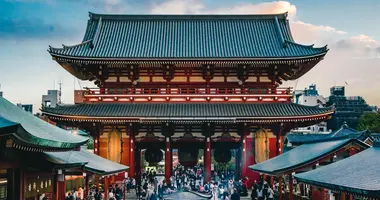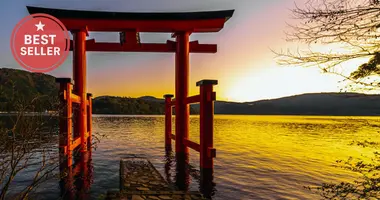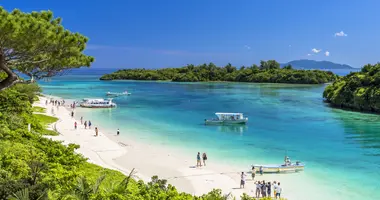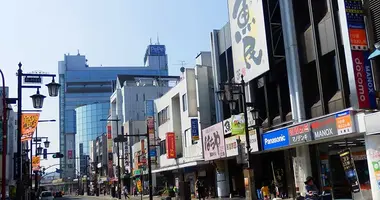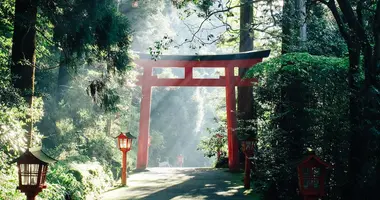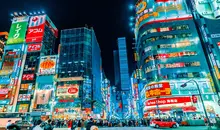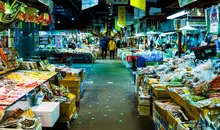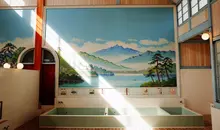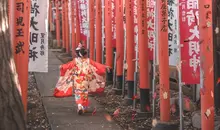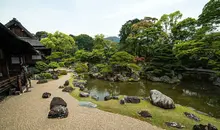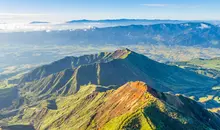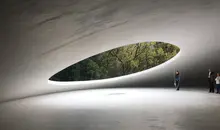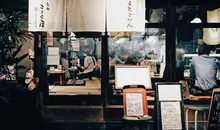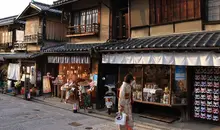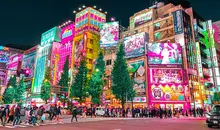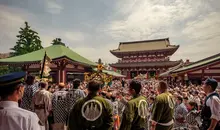Ashigakubo Icicles: A magical winter wonderland in Saitama Prefecture
- Published on : 14/02/2024
- by : Japan Experience
- Youtube
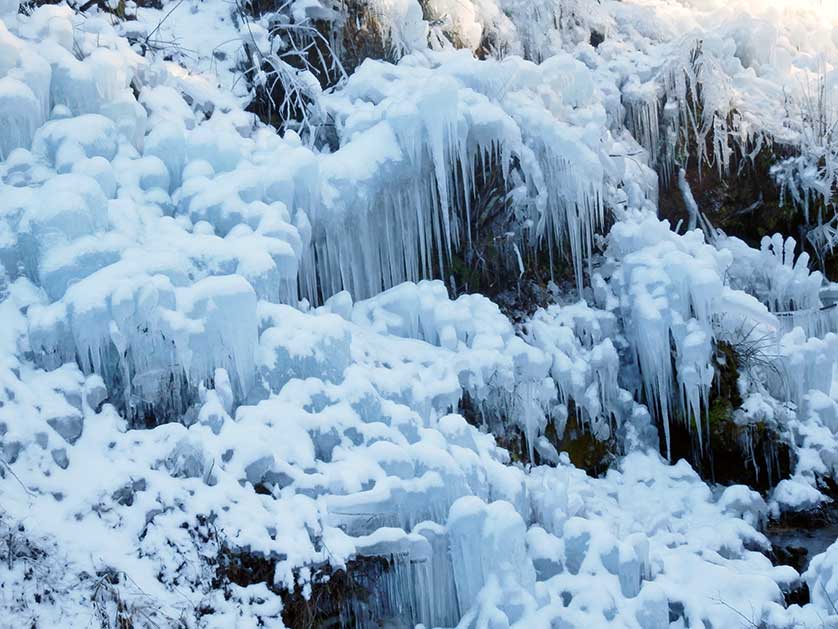
Ashigakubo Icicles covered with snow
Nestled in the picturesque Chichibu region of Saitama Prefecture, the Ashigakubo Icicles offer visitors a breathtaking winter spectacle. This enchanting display of frozen beauty draws thousands of visitors each year, captivating them with its shimmering ice formations and colorful illuminations. As one of the Three Great Icicles of Chichibu, Ashigakubo stands out for its accessibility and impressive scale. From early January to late February, this winter wonderland transforms the landscape into a magical realm of ice and light, providing a unique experience for both nature lovers and photography enthusiasts.
What are the Ashigakubo Icicles and how are they created?
The Ashigakubo Icicles are a stunning display of frozen water formations that cover a small valley near Ashigakubo Village. Unlike natural icicle formations, these are artificially created by local residents who have perfected the art of ice sculpting on a grand scale. The process begins when water is sprayed over trees and rocksin the frigid winter temperatures, gradually building up layers of ice.
The result is a spectacular ice landscape measuring approximately 30 meters in height and 200 meters in width. What makes this display truly unique is the constant maintenance required to keep the icicles in pristine condition. Water from a nearby stream is continuously sprayed onto the ice formations, ensuring they remain intact and grow throughout the season.
When and where to see the Ashigakubo Icicles
The Ashigakubo Icicles are typically open to the public from early January to late February. However, the exact dates can vary depending on weather conditions. In 2024, the event is scheduled to run from January 13th to February 25th. The icicles are located in Ashigakubo Village, part of Yokoze town in the Chichibu district of Saitama Prefecture.
To reach the icicles, visitors can take the Seibu Chichibu Line to Ashigakubo Station. From there, it's a short 10-minute walk to the icicle site. The path is well-marked with flags guiding visitors to the entrance. For those driving, there is ample parking available at the nearby Michi-no-eki (roadside station).
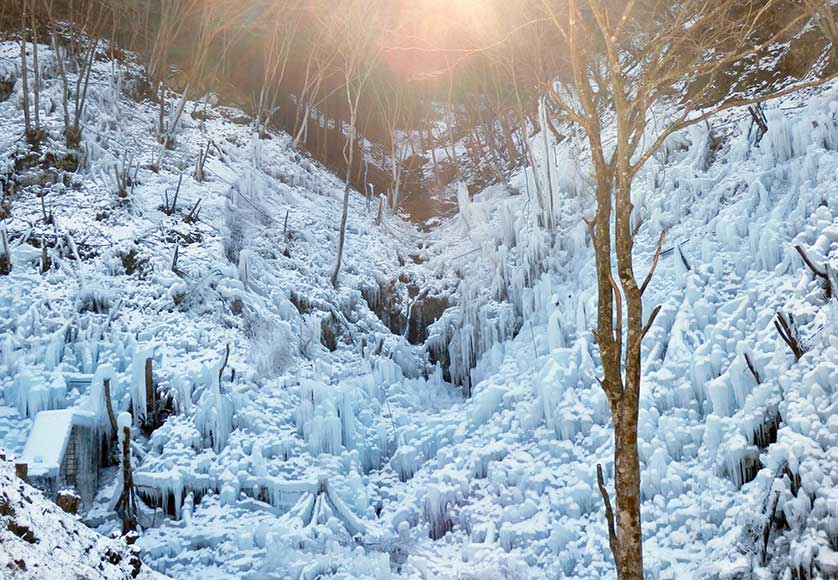
Ashigakubo Icicles in the daylight
Daytime vs nighttime viewing experience
Visiting the Ashigakubo Icicles offers two distinct experiences depending on the time of day. During daylight hours, visitors can appreciate the intricate details and natural beauty of the ice formations. The sunlight reflects off the icy surfaces, creating a dazzling display of sparkles and prisms. This is the ideal time for those who want to capture clear, detailed photographs of the icicles.
However, the nighttime illumination transforms the icicles into a magical spectacle. From Friday to Sunday evenings, the ice formations are lit up with colorful LED lights, creating a enchanting atmosphere reminiscent of a winter fairy tale. The changing colors paint the icicles in hues of blue, purple, green, and red, offering a completely different perspective from the daytime view. The illumination, combined with the occasional passing train, creates a surreal and unforgettable scene.
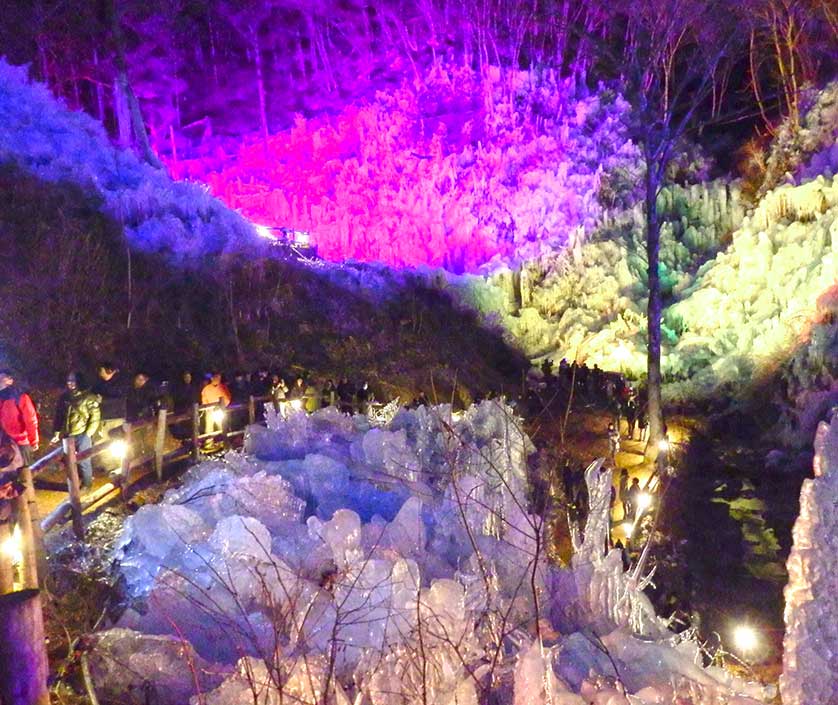
Illumination night at the Ashigakubo Icicles
Practical information for visitors
When planning your visit to the Ashigakubo Icicles, keep the following information in mind:
- Opening hours: Monday to Thursday from 9:00 AM to 4:00 PM, Friday to Sunday and holidays from 9:00 AM to 8:00 PM
- Admission fee: 500 yen for adults and junior high school students, 300 yen for elementary school students, free for preschoolers
- Facilities: There are wood-fired stoves and benches at the top of the hill where visitors can warm up
- Complimentary drinks: Each visitor receives a free cup of either green Sayama tea or amazake (sweet, non-alcoholic sake)
- Clothing: Dress warmly and wear sturdy, non-slip footwear as the path can be slippery
- Photography: Tripods are only allowed in designated areas
For the best experience, arrive early in the day to see the icicles in sunlight, then return in the evening for the illumination. Your admission ticket is valid for the entire day, allowing you to make the most of your visit.
Ashigakubo Icicles as part of the Three Great Icicles of Chichibu
The Ashigakubo Icicles are part of a trio known as the Three Great Icicles of Chichibu. The other two are the Misotsuchi Icicles and the Onouchihyakkei Icicle Park. Each offers a unique experience:
- Misotsuchi Icicles: These are natural icicles formed by a frozen waterfall, offering a more wild and untamed ice landscape
- Onouchihyakkei Icicle Park: Similar to Ashigakubo, these icicles are artificially created and can be viewed from a suspension bridge
- Ashigakubo Icicles: The largest and most easily accessible of the three, known for its impressive scale and nightly illuminations
While all three are worth visiting, Ashigakubo stands out for its combination of accessibility, size, and nightly illuminations. It's possible to visit all three icicle sites in one day if you have a car, but each deserves time to be fully appreciated.
Beyond the icicles: Other attractions in Yokoze and Chichibu
While the icicles are the main winter attraction, Ashigakubo Village and the surrounding Chichibu area offer plenty of other experiences:
- Tea & Strawberries: Ashigakubo is known for its strawberry farms and tea fields. You can purchase locally produced Sayama tea varieties at the icicle site
- Michi-no-eki Ashigakubo: This roadside station offers local products, soba noodles, and information about the area
- Genjuin Temple: Home to an impressive Kannon statue overlooking the village
- Mount Buko: A popular hiking destination offering panoramic views of the region
- Onsen: While Ashigakubo doesn't have its own hot springs, nearby Buko Onsen offers a chance to warm up after viewing the icicles
Visitors can also explore the wider Chichibu area, known for its beautiful landscapes, historic temples, and local festivals. The region is particularly famous for its Sayama tea area and the city of Tokorozawa.
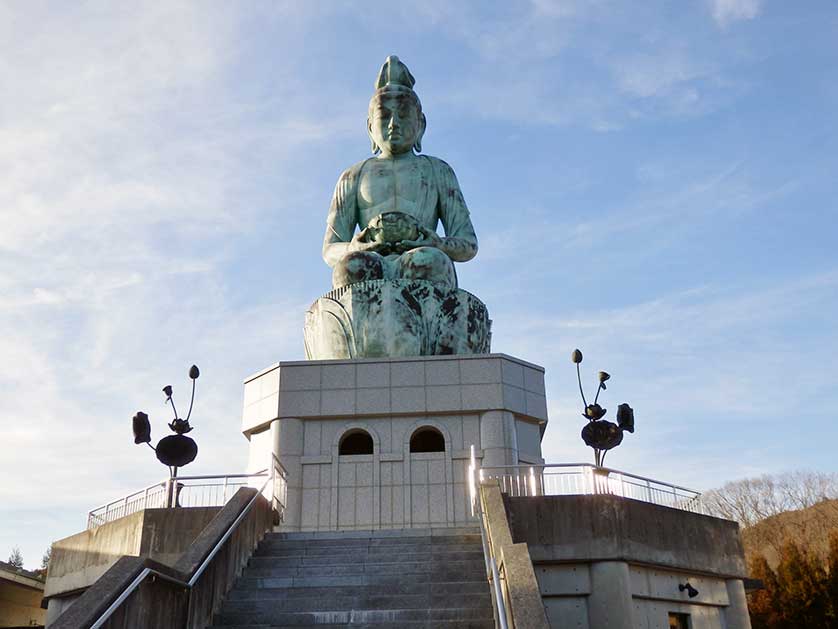
The Kannon of Genjuin Temple, Ashigakubo, Saitama Prefecture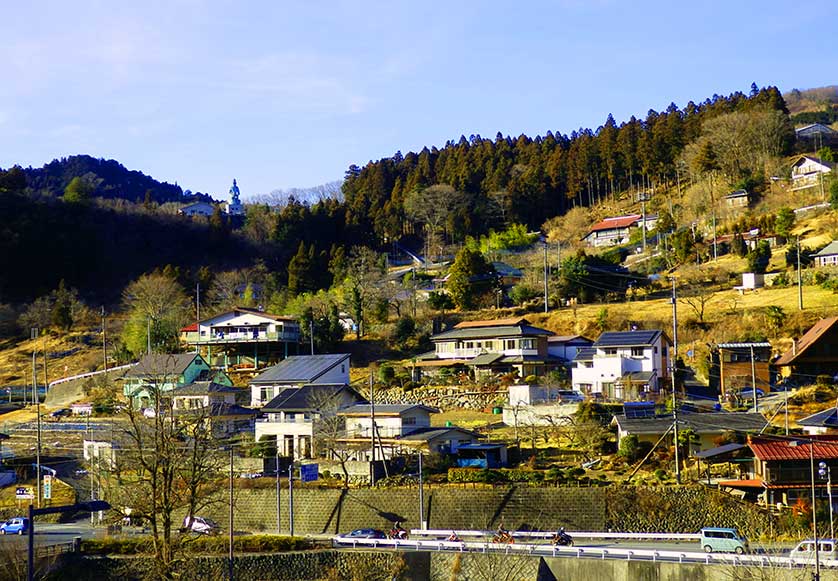
Ashigakubo Village with the Kannon of Genjuin Temple in the background (left)
Tips for capturing the perfect Ashigakubo Icicles photos
For photography enthusiasts, the Ashigakubo Icicles offer a wealth of opportunities. Here are some tips to help you capture stunning images:
- Timing is key: Arrive early for the best natural light, or visit during the illumination for dramatic night shots
- Use a tripod: For sharp images, especially during low light conditions (but only in designated areas)
- Experiment with angles: The winding path offers various vantage points, so explore different perspectives
- Capture the scale: Include people or landmarks in your shots to showcase the impressive size of the icicles
- Play with light: During illumination hours, try long exposures to capture the changing colors
- Don't forget details: While wide shots are impressive, close-ups of individual icicles can be equally captivating
Remember to dress warmly and bring extra batteries, as cold temperatures can quickly drain camera power. With its stunning natural beauty and magical illuminations, the Ashigakubo Icicles provide endless possibilities for creating memorable photographs.
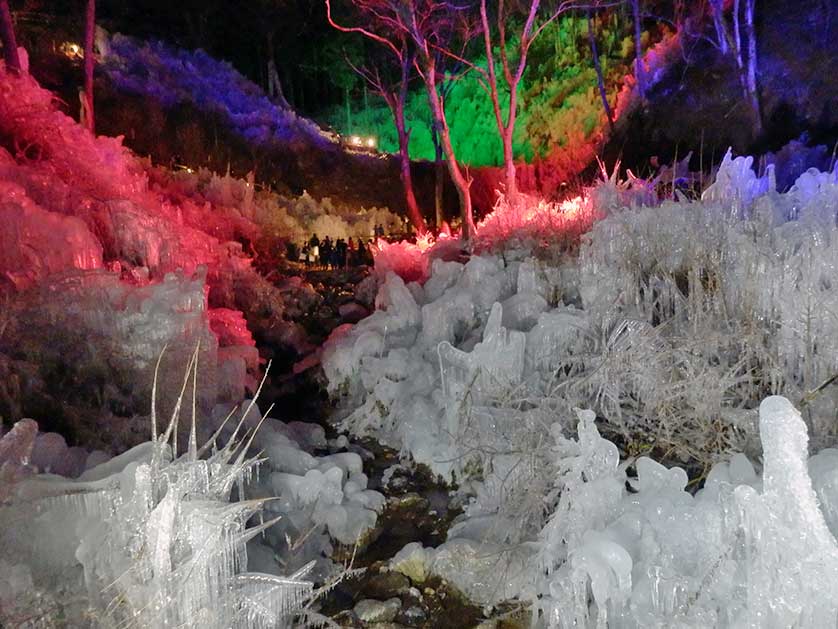
Illumination night at the Ashigakubo Icicles
Access
To reach the Ashigakubo Icicles, take the Seibu Railway from Ikebukuro Station in Tokyo. The fastest route is to take the Red Arrow Limited Express to Hanno, then change to the local Seibu Chichibu Line to Ashigakubo Station. The journey takes approximately 90 minutes. From Ashigakubo Station, it's a 10-minute walk to the icicle site. For those driving, parking is available at the nearby Michi-no-eki Ashigakubo Kaju Koen.
Whether you're a nature lover, photography enthusiast, or simply looking for a unique winter experience, the Ashigakubo Icicles offer a magical escape from the everyday. This frozen wonderland, with its impressive scale and nightly illuminations, provides a mesmerizing display of winter's beauty that will leave you with unforgettable memories.
